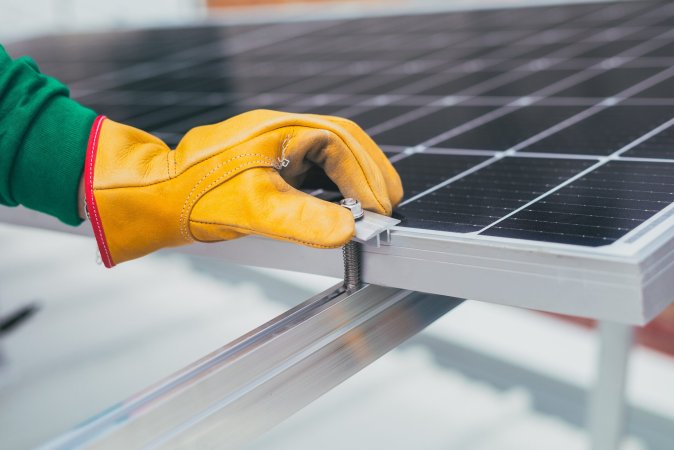

In the immediate aftermath of December’s Paris climate conference, there was a lot of celebrating. The agreement, one could argue, signaled that politics had finally caught up to science, and that there is now a global consensus that climate change is a Big Problem.
But the agreement amounts to little more than a gentlemen’s handshake. The terms are entirely unenforceable, for one thing, and though the goals are laudable, it’s ultimately too little, too late. There’s also no framework for how countries are going to meet their targets. And it’s unrealistic, given that our energy landscape, while generally moving in the right direction toward clean tech, is doing so at a dangerously slow pace.
To reach the agreement’s goal of holding the average global temperature to 2 degrees Celsius above pre-industrial levels, we’ve ended up placing a lot of our bets on unproven (or yet unknown!) future tech that doesn’t exist in a commercial capacity, or at all. This means that we’re banking on blanketing the Earth in renewables and other fossil-fuel-free means while deploying large-scale, negative-emissions technology. And fast. It’s not going to happen.
So really, what the Paris agreement provides humans with is a big nudge. As a species, we tend to not get serious about addressing predicted, preventable problems until they’re directly upon us, and therefore no longer preventable.
On climate change, we’ll have to start fighting against our nature, and perhaps the agreement will spark this type of proactive thinking—and lead to greater action. NPR’s Adam Frank summed it up well when he described it as a “first step in developing a new set of behaviors for human civilization.” No big deal.
Simultaneously, we’re going to need more energy, not less. “In 2040, we’ll have nine billion people on the planet, which means doubling our electricity, ” says Peter Kareiva, director of the Institute of the Environment and Sustainability at UCLA and chair of the science cabinet at the Nature Conservancy. “So how do we build a smart portfolio?”
What that portfolio looks like is yet to be seen, but we’ll certainly want cheaper and more efficient renewables like solar and wind, while replacing evils such as coal with lesser evils such as natural gas. There will likely be carbon taxes and economic incentives, too. And we need tremendous investment in and public support for new clean tech.

In fact, the U.S. might want to consider taking a page from pollution-plagued China. In 2015, China invested a whopping $110.5 billion on clean energy, whereas the U.S. spent about half that. China, at least, is throwing lots of options at the wall to see what sticks. No one would argue that it’s the most efficient strategy, but you have to applaud their tenacity. It’s an investment in the future, a future that sits out beyond the latest election cycle and political gridlock.
The U.S. doesn’t have the same energy needs as China—and that’s just where the countries’ differences begin. It’s not China’s approach that should necessarily be emulated, but their attitude of urgency.
It’s making a difference: China’s 2015 coal imports dropped 30 percent from 2014, and the country plans to close 1,000 mines this year, as well as halt approval of new ones. Research into clean coal, better solar, and safer nuclear is getting the big bucks, and innovators from all over are hungry to collaborate.
For example, the Chinese government signed an agreement with Bill Gates’ TetraPower in October to advance nuclear power that would be safer, far more efficient, more cost effective, and have easier waste disposal. That kind of thing doesn’t often happen in the U.S. due to regulation and lack of public support. “Out of a sense of desperation in China, there’s a great energy revolution going on,” says Michael Shellenberger, a founder of the Breakthrough Institute. “We’re all going to need that kind of revolutionary thinking to get serious about a zero-carbon future.”
Indeed, a recent report from the International Energy Agency emphasized the need for “new, groundbreaking” clean-tech, going as far to say that it’s the “only way the world can meet its climate goals.” Big-time innovation is currently too slow and underfunded—the report dramatically called for tripling public spending on clean-energy R&D. Whether cash can substitute for time is another matter to be seen.
Even techno-optimists allow that wholesale innovations such as armies of carbon-eating nanobots, and say, fusion, take time. Lots and lots of time. “Energy technology evolves more slowly than any other tech in our society,” says Shellenberger, “The transition from wood to coal started in the 16th century, and it’s still going on.”
That’s why major names in the worlds of climate science and tech (Columbia University’s James Hansen and PayPal founder Peter Thiel, for example) are advocating for improving—and using—tools we already have, such as nuclear power. The idea is that we need to embrace nuclear, make it better, and implement it more cheaply and safely.
Perhaps the millennial generation, who weren’t around for Three Mile Island and Chernobyl, will be more open to nuclear energy. (Just ask MIT’s Leslie Dewan and Mark Massie, who are working a molten salt reactor that will burn 75 times the electricity per ton of uranium and be virtually accident-proof.)
Continuing to push back with ideological blockades means we’re making zero progress toward reducing our dependence on fossil fuels, as more humans need more energy. And stalling until we find a perfect solution is a tactic that has long run out of time.







